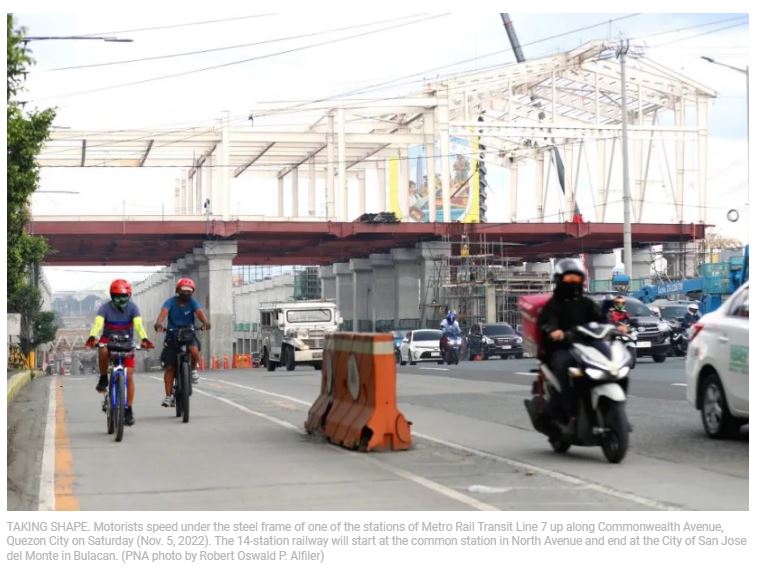Philippines: Growth slowdown to continue
FULL-YEAR economic growth expectations will have to be tempered given an expected third-quarter slowdown and the possibility of a further deceleration in the last three months of the year, analysts polled by The Manila Times indicated.
With July-September results to be announced on Thursday, a survey of six economists led to a median growth forecast of 6.0 percent, a substantial slowdown from the 7.4-percent expansion in the previous quarter and January-March’s 8.4 percent.
This would put year-to-date gross domestic product (GDP) growth at 7.2 percent, near the upper end of the government’s downwardly revised 6.5- to 7.5-percent target for 2022.
Official third-quarter growth data is scheduled to be released by the Philippine Statistics Authority this Thursday, November 10.
Continued deceleration
All analysts polled forecast a continued deceleration, with the lowest projections for the quarter at 5.2 percent and the highest at 6.2 percent due to factors such as soaring inflation and a weaker peso that have cut into consumer spending.
Economist and Security Bank Corp. Assistant Vice President Robert Dan Roces, one of those who saw 5.2-percent Q3 (third quarter) growth, said it would mostly be “due to headwinds posed by inflation and the peso’s weakness” that “dampened the potential growth of private consumption which is around 72 percent of GDP.”
“Nonetheless, the government did not impose new mobility restrictions, allowing economic activities to continue despite the challenges, underscoring a still sustained recovery for the economy and still decent growth figures,” he added.
Nicholas Antonio Mapa, senior economist at ING Bank Manila, likewise, forecast an easing to 5.2 percent as “favorable base effects and the glow from the election are expected to fade quickly.”
A record $6-billion trade gap in August could have also dragged down GDP growth, he added.
Consumption could still post an expansion on follow through revenge spending, Mapa continued, “although we can expect the expansion to be capped by surging prices.”
Even so, he said “growth should remain robust supported by improvements in construction activity and investment in durable equipment.”
Reduced consumption
DBS economist Han Teng Chua, meanwhile, said economic expansion could have eased to 6.0 percent as “private consumption was likely dragged lower by higher inflation, which undercut consumers’ purchasing power, even though normalized retail mobility from post-pandemic reopening remained a positive factor.”
He added that the higher cost environment, tied with higher borrowing costs arising from Bangko Sentral ng Pilipinas monetary tightening since May, “did not bode well for business sentiment and activity.”
Like Mapa, Chua pointed out that the election-related government consumption boost in the second quarter would have faded in the third quarter of the year.
Moreover, “net trade likely continued to subtract from headline growth amid stronger import growth relative to exports, with the latter increasingly challenged by a tougher global external environment.”
“Overall, we see downside risks to our full-year 2022 growth forecast of 7 percent as against government’s forecast range of 6.5 percent to 7.5 percent,” he added.
Michael Ricafort, chief economist at Rizal Commercial Banking Corp., also expects third-quarter growth of 6.0 percent. However, he sees an uptick to 6.5 percent for the last three months of the year.
Despite a seasonal increase in economic activities in the fourth quarter, Ricafort said that risk factors, such as higher inflation, “would still eat into GDP growth for 3Q 2022 and 4Q 2022,” adding that the weaker peso “could have led to more expensive imports that contributed to higher overall inflation.”
He also underscored that higher interest rates and borrowing costs largely brought about by more aggressive Fed rate hikes and other central bank monetary tightening would be a drag to further economic growth.
Further reopening needed
“Going forward, the biggest economic growth driver would still be any additional measures to reopen the economy toward greater normalcy… would be the more sustainable source of better economic recovery prospects in terms of allowing higher capacity for many businesses/industries that entail more investments and the creation of more jobs/employment and other business/livelihood opportunities,” he said.
China Banking Corp. chief economist Domini Velasquez, who had the highest third-quarter growth forecast of 6.2 percent, cited a “dimmer external outlook, and a high inflation and interest rate environment [that] likely weighed on economic activities.”
While services likely grew “robustly” in July to September, Velasquez noted that growth would have been slower than the second quarter “due to the rebalancing of post-pandemic normalization and higher inflation.”
“Despite some positive developments, we expect consumers to curtail some of their spending on nonessential goods and services due to continued high inflation,” she said.
Velasquez added: “Industry growth will likely be impeded by high costs of doing business (costs of raw materials, intermediate goods, labor costs and cost of borrowing), especially in manufactured goods. As the largest export segment, demand for semiconductors pulled down performance of the manufacturing sector.”
On a positive note, she cited improved tourist arrivals the third quarter that contributed to the consumption of services such as air transport, accommodation, and the like. “We also saw that big-ticket items, such as auto sales, continue to defy a high interest rate environment.”
Still, economic growth will likely further slow in the coming quarters, Velasquez said. Additionally, 2023 GDP growth in 2023 may fall short of the government’s 6.5- to 8.0-percent target.
“A global slowdown, aggressive monetary tightening and reduced government spending will temper GDP growth in 2023,” she said.
Source: https://www.manilatimes.net/2022/11/08/business/top-business/growth-slowdown-to-continue/1865383


 English
English




